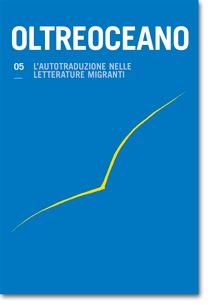L’autotraduzione e le ‘migrazioni linguistiche’ di Mario Duliani
Keywords:
autotraduzione, migrazioni linguistiche, Mario DulianiAbstract
All’interno della specifica esperienza della migrazione la lingua può dare accesso a due o più tradizioni culturali ed è grazie a essa che si può tentare di ricostruire una continuità in una vita contrassegnata sempre più da fratture e dispatri. Ben lo testimonia Mario Duliani nel romanzo La Ville sans femmes, pubblicato nel 1945, seguito, a distanza di un anno, dall’autotraduzione Città senza donne, che costituisce una testimonianza diretta, l’unica che un italiano abbia scritto all’interno di un campo d’internamento, e che per tale ragione assume un peculiare valore storico, nonché letterario.
Self-Translation and ‘Linguistic Migrations’of Mario Duliani
Within the experience of migration language may open to several cultural traditions, from which a continuity of life signed by fractures and dislocation is revealed. Evidence of this is Mario Duliani’s novel La Ville sans femmes (1945) followed by the self-translated Città senza donne (1946), the only work written by an Italian in an internment camp, providing a most interesting example of historical and literary importance.
Downloads
References
Beaujour, E. K. (1989): Alien Tongues. Bilingual Writers of the First Emigration. Ithaca-London: Cornell University Press.
Berman, A. (1984): L’Épreuve de l’étranger. Paris: Gallimard.
Canetti, E. (1977): Die gerettete Zunge. Geschichte einer Jugend. München: Carl Hanser Verlag.
Sinopoli, F & Tatti, S. (Eds.) (2005): I confini della scrittura. Il dispatrio nei testi letterari. Isernia: Cosmo Iannone.
Fitch, B.T. (1988): Beckett and Babel. An Investigation into the Status of the Bilingual Work. Toronto-Buffalo-London: University of Toronto Press.
Forster, L. (1970): The Poet’s Tongues. Multilingualism in Literature. Cambridge: Cambridge University Press.
Fusco, F. (2008): Da La Ville sans femmes a Città senza donne di Mario Duliani. In A. Ferraro & A. P. De Luca (Eds.), Itinerranze e transcodificazioni. Scrittori migranti dal Friuli Venezia Giulia al Canada (pp. 51-74). Udine: Forum.
Fusco, F. (In corso di stampa): Francese e italiano a confronto: La Ville sans femmes e Città senza donne di Mario Duliani. In E. Lavric & W. Pöckl (Eds.), Comparatio delectat. Akten der VI. Internationalen Arbeitstagung zum romanisch-deutschen und innerromanischen Sprachvergleich. Frankfurtam Main usw: Peter Lang: s.p.
Hoffman, E. (1989): Lost in Translation. A Life in a New Language. New York: Penguin.
Hokenson, J.W. & Munson, M. (2007): The Bilingual Text. History and Theory of LiterarySelf-Translation. Manchester: St. Jerome.
Kellman, S. G. (2000): The Translingual Imagination. Lincoln, Nebraska: University of Nebraska Press.
Molnar, M. (1995): Noetic Licence in Brodsky’s Self-Translation. Russian, Croatian and Serbian, Czech and Slovak, Polish Literature, 37, pp. 333-338.
Perry, M. (1981): Thematic and Structural Shifts in Autotranslations by Bilingual Hebrew-Yiddish Writers: The Case of Mendele Mokher Sforim. Poetics Today, 4, 2, pp.181-192.
Piccone Stella, S. (2008): In prima persona. Scrivere un diario. Bologna: Il Mulino.
Popovic, A. (1976): Dictionary for the Analysis of Literary Translation. Edmonton: University of Alberta.
Baker, M. & Saldanha G. (Eds.), (2009): Routledge Encyclopedia of Translation Studies. London-New York: Routledge.
Santoyo, J. C. (2005): Autotraducciones: Una perspectiva histórica. Meta, 50, 3, pp. 858-867.
Shuttleworth, M. & Cowie, M. (1997): Dictionary of Translation Studies. Manchester: St. Jerome.
Steiner, G. (1992): After Babel. Aspects of Language and Translation. London-New York: Oxford University Press.
Steiner, G. (1971): Extra-territorial. Papers on Literature and the Language Revolution. New York: Atheneum.
St-Pierre, P. (1996): Translation as Writing Across Languages: Samuel Beckett and Fakir Mohan Senapati. TTR: traduction, terminologie, rédaction, 9, 1, pp. 233-257.
Tanquiero, H. (2000): Self-Translation as an Extreme Case of the Author-Translator-Dialectic.
In A. Beeby & al. (Eds.), Investigating Translation. Selected Papers from the 4th International Congress on Translation, Barcelona 1998 (pp. 55-63). Amsterdam-Philadelphia: Benjamins.
Downloads
Published
How to Cite
Issue
Section
License

This work is licensed under a Creative Commons Attribution-NonCommercial-ShareAlike 4.0 International License.
The authors undertake to comply with the following conditions, which are considered accepted at the time of submission of their contributions.
The sending of a text implies that it is unpublished and not submitted to be published elsewhere.
1. If accepted, the author shall confer on the publisher the right to publish and distribute it both in paper form and in the online electronic edition. The published articles will be downloadable and made available in open access.
2. Provided that it correctly indicates that the first publication took place in the journal Oltreoceano. Rivista sulle migrazioni the author has the right to: a) reproduce the article in separate extracts or collected in a volume; b) publish the article on their personal website or teaching site provided that these sites are of a non-commercial nature; c) deposit the article in online archives of a non-commercial nature, linked to the institution they belong to or as part of projects for the non-commercial dissemination and open access of scientific works.
The use of contributions by third parties, for commercial or otherwise unauthorized purposes, is not allowed. The publisher declines all responsibility for the unauthorized use of the material published in the journal.












